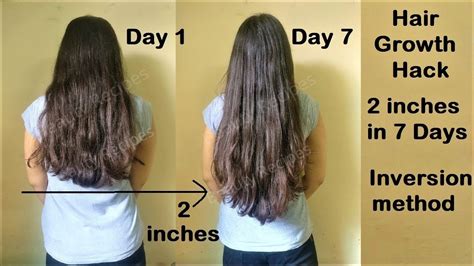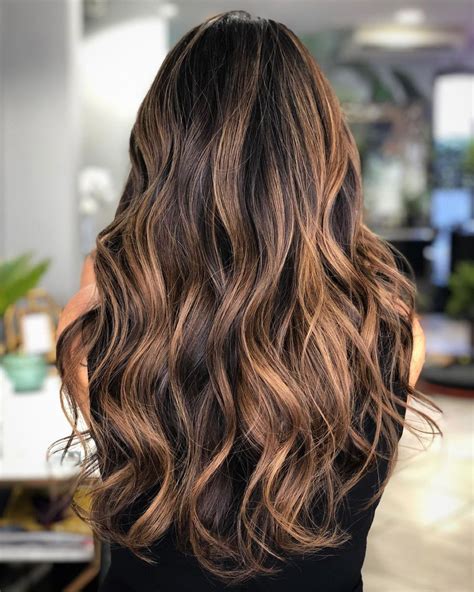Learn about the inversion method for hair growth, its scientific basis, effectiveness, proper techniques, and potential risks and side effects. Expert advice for healthier hair.
What is the inversion method?
Contents
The inversion method is a hair growth technique that involves hanging your head upside down to stimulate blood flow to the scalp. This method is believed to promote hair growth by increasing circulation and delivering essential nutrients to the hair follicles. It is often recommended to perform the inversion method for a few minutes each day over a period of several weeks, with the goal of achieving faster hair growth.
Proponents of the inversion method claim that it can lead to longer and thicker hair in a relatively short amount of time. The theory behind this method is that the increased blood flow to the scalp may stimulate the hair follicles and promote faster hair growth. While there is limited scientific evidence to support these claims, many people have reported positive results from incorporating the inversion method into their hair care routine.
It is important to note that the inversion method may not be suitable for everyone, especially those with certain medical conditions such as high blood pressure or glaucoma. It is essential to consult with a healthcare professional before attempting the inversion method to ensure that it is safe for you to perform.
While the inversion method may seem simple, it is crucial to follow the proper technique to minimize the risk of injury. It is recommended to gradually ease into the inversion position to avoid dizziness or discomfort. Additionally, it is important to use caution and not overdo the inversion method, as excessive or prolonged upside-down positioning can lead to adverse effects.
The science behind hair growth
The science behind hair growth
The process of hair growth is a complex and fascinating one, involving a multitude of biological factors and processes. One key player in this process is a structure called the hair follicle, which is responsible for producing hair. Hair growth occurs in several phases, including the anagen (growth) phase, the catagen (transition) phase, and the telogen (resting) phase. During the anagen phase, the hair follicle is actively producing hair, while in the telogen phase, the follicle is at rest and no new hair is produced.
Another important aspect of hair growth is the role of blood circulation. The hair follicles receive nutrients and oxygen through the blood, and a healthy blood flow is essential for promoting hair growth. This is where the concept of the inversion method comes in – proponents of this method claim that flipping your head upside down can improve blood circulation to the scalp and promote hair growth. However, the scientific evidence behind this claim is limited, and more research is needed to determine the true effectiveness of the inversion method.
In addition to blood circulation, hormone levels also play a significant role in hair growth. Hormones such as testosterone and estrogen can influence the growth of hair, and imbalances in these hormones can lead to hair loss or excessive hair growth. The production of hair is also influenced by genetics, with certain genes dictating the length and thickness of hair strands. Understanding the complex interplay of these biological factors is crucial for gaining insights into the science behind hair growth.
| Factors influencing hair growth |
|---|
| Hair follicle cycle |
| Blood circulation |
| Hormone levels |
| Genetics |
Overall, the science behind hair growth is a rich and complex field that involves various biological processes and factors. While the inversion method and other hair growth techniques may have some anecdotal support, it is important to approach them with a critical mindset and a clear understanding of the underlying science.
Does the inversion method work?
The inversion method for hair growth has been gaining popularity in recent years as a natural and effective way to promote faster hair growth. But does it really work?
Advocates of the inversion method claim that by hanging upside down for a few minutes each day, you can increase blood flow to the scalp, which in turn stimulates hair follicles and promotes hair growth. However, there is limited scientific evidence to support these claims.
While some individuals may experience temporary improvements in hair growth and quality as a result of increased blood circulation and decreased tension in the scalp, the long-term effectiveness of the inversion method remains uncertain. Additionally, the inversion method may not be suitable for everyone, particularly those with certain medical conditions or neck or back issues.
Ultimately, the effectiveness of the inversion method for hair growth is largely anecdotal and subjective. Some individuals may find success with this method, while others may not experience any noticeable changes in hair growth. It’s important to approach the inversion method with caution and consult with a healthcare professional before trying it, especially if you have any underlying health concerns.
How to properly do the inversion method
The inversion method is a popular technique for promoting faster hair growth. To properly perform the inversion method, start by choosing a suitable oil for your hair type. Common options include coconut oil, olive oil, or argan oil. Apply the oil to your scalp and massage it in gently using your fingertips. Once the oil is evenly distributed, tip your head upside down and use your fingers to gently massage your scalp for 4-5 minutes. This helps to stimulate blood flow to the hair follicles, promoting faster growth. After massaging, leave the oil in your hair for at least 4 hours or overnight before washing it out with a mild shampoo.
It is important to note that the inversion method should not be performed more than once a week, as excessive use can cause scalp irritation and may not yield the desired results. Additionally, pregnant women and individuals with high blood pressure or heart conditions should avoid the inversion method due to the potential risks associated with the position.
For best results, it is recommended to incorporate the inversion method into a consistent hair care routine alongside a balanced diet and adequate hydration. While the inversion method may not work for everyone, many individuals have reported noticeable improvements in hair growth and strength when performed correctly and in moderation.
Potential risks and side effects
While the inversion method is often touted as a natural and effective way to promote hair growth, it’s important to be aware of the potential risks and side effects associated with this technique. One possible risk of the inversion method is dizziness or lightheadedness, especially if the head is held in an inverted position for an extended period of time.
Another potential side effect is scalp irritation or discomfort, particularly for individuals with sensitive skin or pre-existing scalp conditions. In some cases, the inversion method may also lead to increased oil production on the scalp, which can contribute to greasy or weighed-down hair.
Furthermore, individuals with certain medical conditions such as high blood pressure or glaucoma should exercise caution when attempting the inversion method, as it may adversely affect their health. It’s crucial to consult with a healthcare professional before incorporating this technique into your hair care routine, particularly if you have any underlying health concerns.
Additionally, practicing the inversion method with improper form or for excessive durations may result in strain or discomfort in the neck, shoulders, and back. It’s important to prioritize safety and proper technique to minimize the risk of injury while attempting to stimulate hair growth using this method.
Ultimately, while the inversion method may offer potential benefits for some individuals, it’s essential to be mindful of the potential risks and side effects associated with this practice. Prioritizing safety, consulting with a healthcare professional, and listening to your body’s signals are all important aspects of adopting this hair growth technique.











